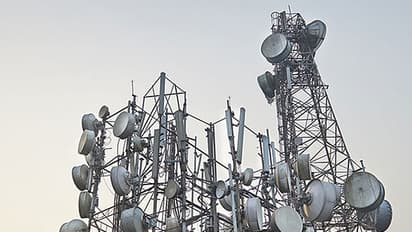Good news for Bengalureans! Call drop rules tightened by the telecom regulatory body

Synopsis
According to Trai secretary (acting) SK Gupta, if a service provider fails to meet the call drop benchmark in a consecutive quarter, the penalty will be hiked by 1.5 times and in the third consecutive month, it will be doubled. The recent regulation has introduced a drop call rate (DCR) spatial distribution measure, which means that call drop should not exceed 2% for 90% of the telecom towers of an operator. The calculations will come into effect from October 1, 2017, which means that the October-December period will be the first quarter when the calculation will start.
The Telecom Regulatory Authority of India made it clear on Friday that it will take stringent action against service providers for call dropping. In fact, it has changed its measurement criteria by moving from the circle level to the tower level. The authority has also steeply increased the penalty for breaching the benchmark from Rs 1 lakh per violation to a maximum of Rs 5 lakh. It is said that the penalty can even go upto Rs 10 lakh if operators failed to meet the benchmark for three consecutive quarters.
Speaking to the Financial Express, Trai chairman RS Sharma said, "We have proposed financial disincentive in the range of Rs 1-5 lakh. It is a graded penalty system depending on the performance of a network." According to Trai secretary (acting) SK Gupta, if a service provider fails to meet the call drop benchmark in a consecutive quarter, the penalty will be hiked by 1.5 times and in the third consecutive month, it will be doubled. Gupta said, "However, there is cap of `10 lakh on financial disincentive."
Unlike the previous regulation, which allowed call drops of up to 2% on average in a circle, the recent regulation has introduced a drop call rate (DCR) spatial distribution measure, which means that call drop should not exceed 2% for 90% of the telecom towers of an operator. This, eventually means that call drops will not be measured on the basis of circle but that of towers. However, the DCR temporal distribution measures stipulates that during busy hours, call drop rate must not be exceeding 3% benchmark for 97% of the towers in a telecom circle for 90% of the days. Sharma further added, "We have added a temporal (time-based) and a spatial (geography-based) calculation for call drops. This will be done on a percentile basis. Averages many times hide many things. This new method will help in providing good services to even areas which suffered even though the overall call drop level was within the stipulated level."
The calculations will come into effect from October 1, 2017, which means that the October-December period will be the first quarter when the calculation will start. Cellular Operators’ Association of India’s (COAI) director general Rajan S Mathews said, "Quality of service available from a network is dependent on a number of extraneous factors which may not only be environmental. These include factors such as number of users accessing the network at that time; the area covered by the BTS (base transceiver station); whether the customer is indoors or outdoors, application being used by the customer; peak/off-peak time; kind of device or hardware being used; additional external interference as well as the quantum of spectrum available. All of these are dynamic in nature and the slightest variations in these parameters can cause major changes in the QoS."
Given the persistent issue of call drops in Bengaluru, this regulation could indeed revolutionise customer experience in the telecom field in the city.
Find the latest Technology News covering Smartphone Updates, AI (Artificial Intelligence) breakthroughs, and innovations in space exploration. Stay updated on gadgets, apps, and digital trends with expert reviews, product comparisons, and tech insights. Download the Asianet News Official App from the Android Play Store and iPhone App Store for everything shaping the future of technology.